|
|
|
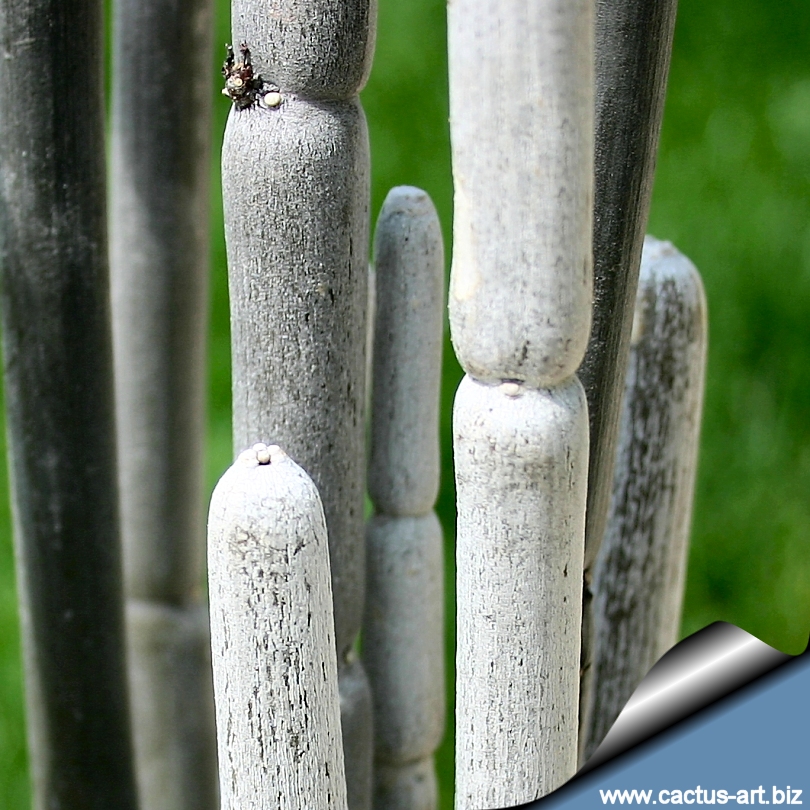
This is probably the most fashionable succulent Ceropegia known.
|
|
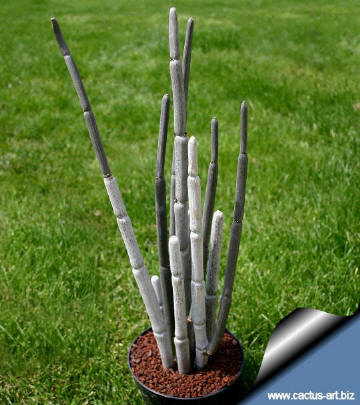 |
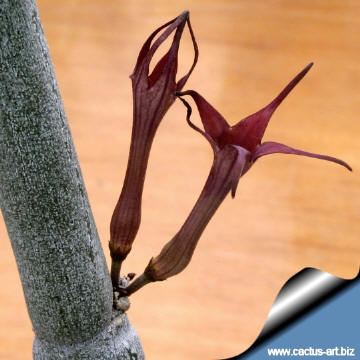
Flower
tubular, reddish brown, with five narrow
lobes united at the tip; flowering is in spring to summer.
|
|
. |
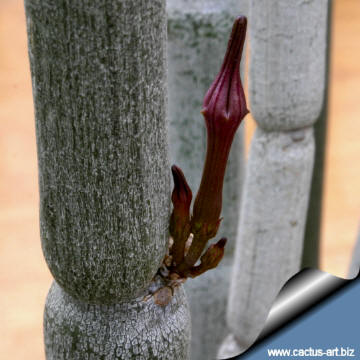
Blooms in clusters of two to five |
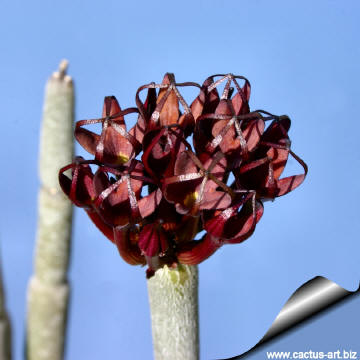
(or more) in the leaf
axils.
|
|
. |
|
|
|
|
. |
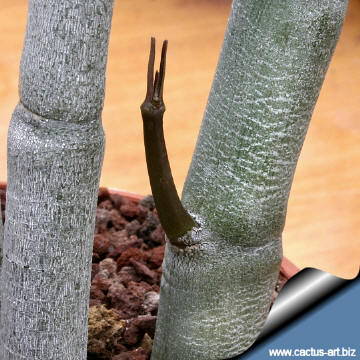
The new shoots grows from the plant |
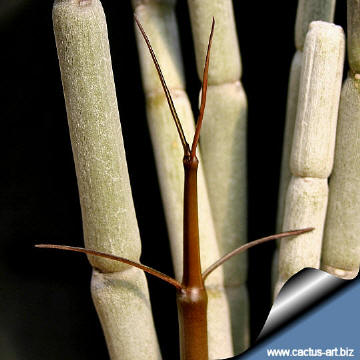
base and are of a bright chocolate |
|
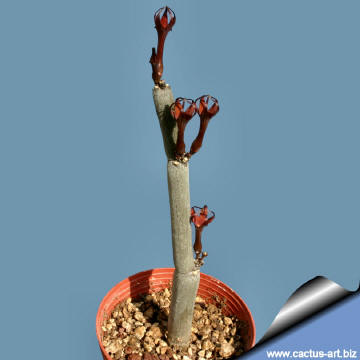 |
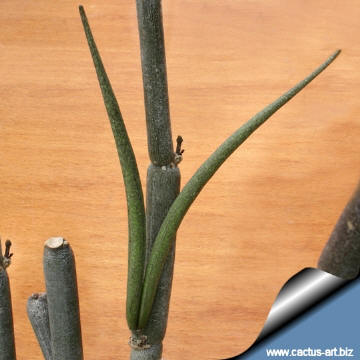
The
fruit is a pair of large
follicle up to 10 cm long. |
|
Photo of conspecific taxa, varieties, forms and
cultivars of Ceropegia dichotoma.
|
|


Advertising
|
|
|
|
|
Family:
Asclepiadaceae (Apocynaceae)
(Milkweeds family)
Scientific name:
Ceropegia
fusca Bolle
In: Bonplandia 9:51. 1861
Origin: It is
endemic to the Canary Islands, where it grows on Tenerife
(especially the Macizo de Anaga area), Gran Canaria and La Palma
Habitat: Growing
in nature in exclusively red, recent lava in sun exposed spots at up to
about 600 m altitude where they form large upright open shrubs.
Origin: It is
endemic to the Canary Islands, where it grows on Tenerife
(especially the Macizo de Anaga area), Gran Canaria and La Palma at up
to about 600 m altitude where it forms large upright open
shrubs.
Synonyms:
-
Ceropegia dichotoma subsp. fusca (Bolle) G.D.Rowley
|
|
Description: It makes a very handsome pot plant as the
stems grow upright in tight formation looking something like
glaucous, grey organ pipes. This ceropegia is unusual in that it
grows more like a shrub
with several spreading,
greyish cylindrical branches, branching mainly near the base.
Stems:
Strongly succulent, joined, erect (or sometime trailing)
woody 80 to 150 cm (or more) tall, they are glaucous-grey,
reddish-green to olive green densely covered with white wax under very
sunny conditions. They taper from a diameter of just over 12 mm at the
base, diminishing at the
nodes, to just under a 6 mm in the last node.
Leaves: At each
node and on the tip of the
stem appears few narrow, straight, needle-like
leaves 2-12 cm long, 1,5-9 mm wide,
arranged in opposite pairs, they are
deciduous and
wilt quickly if there isn't enough water.
The plant is leafless for
most of the year.
Flowers: The lantern shaped flowers are
produced in clusters of two to five in the leaf axils; they are tubular,
dark reddish brown, with five narrow lobes joined at the tip.
Blooming seson:
Spring to summer.
Fruits: The fruit is a pair of large
capsules up to 10 cm long.
|
|
|
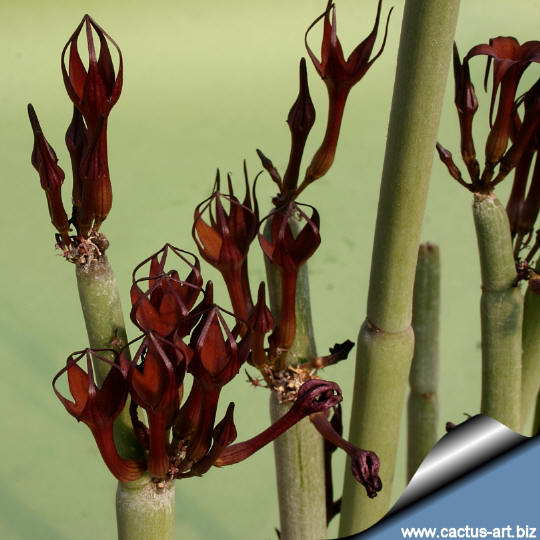
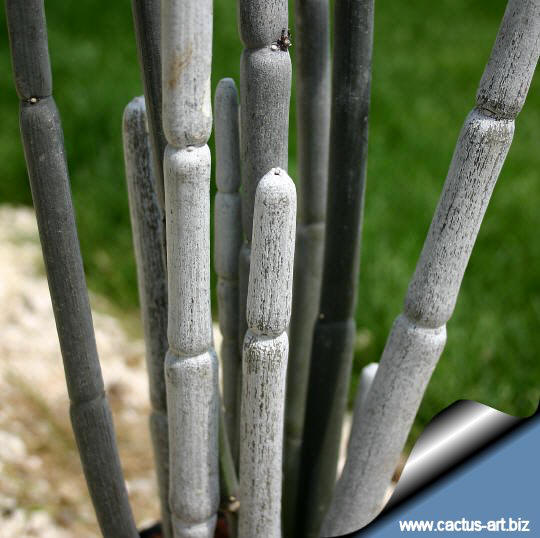
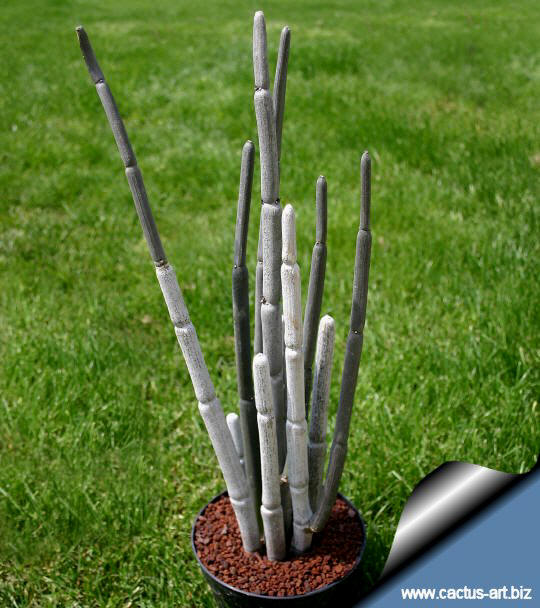
|
|
Cultivation:
Full to
part sun, moderate water in warm season, drier in
winter. It requires hot conditions and how much sun as possible to
grow well. Can be grown outdoor in mild climate where it proves to grow
well semi-neglected. It is also very resistant and is very rare to see
an aphid or a sick part, be only aware of mealy bugs.
Propagation: Seeds, cuttings.
Uses:
It is a slow grower plant not suitable
for indoor culture, it can be
used as an ornamental plant in arid gardens. It requires hot and very
sunny conditions to grow well. |
|